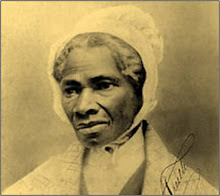And the segment of Black Americans at the highest risk for contracting HIV are those:  Sojourner's Place is pleased to be a participant in the 2009 National Black HIV/AIDS Awareness Day. Initiated in 2001, this is an annual community mobilization HIV testing and treatment initiative. I encourage all Sojourners to visit the NBHAAD site to learn how you too can get involved in today's events and possibly help save a life.
Sojourner's Place is pleased to be a participant in the 2009 National Black HIV/AIDS Awareness Day. Initiated in 2001, this is an annual community mobilization HIV testing and treatment initiative. I encourage all Sojourners to visit the NBHAAD site to learn how you too can get involved in today's events and possibly help save a life.National Black HIV/AIDS Awareness Day is directed, planned and organized by a working group of national organizations in partnership with the Centers for Disease Control and Prevention. The goal of this partnership is to to mobilize communities and address specific issues in regards to local epidemics and best practices that are science-based and will influence the course of HIV in Black communities across our country.
HIV and AIDS remains a subject that many African Americans don't want to think about, let alone talk about. But, not thinking or talking about it has not stopped the spread of this deadly disease and virus in our community. There has been some criticism that HIV/AIDS is being dubbed to be "a Black disease" and therefore we should be suspect of the statistics presented to us. But, I suspect that anyone who knows about anything about these 6 letters up close and personal would probably ask the question "and what's your point?" As they know - that regardless of the color of your skin, for HIV and AIDS there is no known cure. The facts speak for themselves. They cannot be argued against. And the facts are:
Black Americans have:
Obliged to you for hearing me,
and now old SjP ain't got nothin' more to say...
~~~ ~~~ ~~~
Technorati ~ ~ Del.iciou.us ~ ~ Digg This! ~ ~ StumbleUpon ~ ~ Twitter ~ ~ My Good Towels ~ ~ FeedBlitz ~ ~ Email SjP
Sojourner's Place
This entry was posted
at Saturday, February 07, 2009
and is filed under
calling all sojourners,
when goose grease ain't enough
. You can follow any responses to this entry through the
.

|

|
Who I Be?

- SjP
One Christian, African-American, Wife, Mother, Daughter, Sister, Professional, Sorority Woman just Sojourning for the Truth and not afraid to tell it!
Welcome to Sojourner’s Place!
Created with the professional African-American woman in mind, the scope of Sojourner’s Place evolves every day. So glad you stopped by and I hope you will be inspired, informed, motivated, and energized!
Once again, welcome and much obliged for stopping by. Come back soon!
SjP
Est. January 1, 2008
Cooking Up on the Stove
The Menu @ SjP's
Round the Kitchen Table
Up in the Attic
SjP's Daily Dose
Coffee & Dessert
- AAO: Discussion Forum
- Afro-Netizen
- Automatic Preference
- Beautiful Are the Souls of Black Sisters
- Bent Society Blog
- Black Agenda Report
- Black Gives Back
- Black News Junkie
- Black Perspective [dot] Net
- Change Therapy
- Diversity Ink
- Hello Beautiful
- Hey Shae!
- I Choose Bliss
- Mimi Writes
- Modern Musings
- Monroe Anderson
- Mothers are Vanishing
- New Black Woman
- PurpleZoe
- Racialicious
- Roots of Humanity
- Sankofa
- Shades of Black and White
- Songs in the Key of Life
- Tell It WOC Speak
- The Black Factor
- The Busy Mind of a Quiet Man
- The Epitome: Dialogues and Discourse
- The Field Negro
- The Root
- Thoughts of a Ghetto Intellectual
- Underground Railroad Tribal Alliance
- Vanessa: Unplugged
- Vibes of Humanity
- What Matters to Believer
- When Least Expected
Global Day of Action for Troy Davis


SjP passes this award on to all Global Blogging Day of Action for Troy Davis Participants.
Today's Word of Knowledge
Find more Motivational Quotes
Home of the Helping Hand Emblem
For My Sistas
'Cause, I Sing America, Too
 The 44 President of the United States
The 44 President of the United States~~~~~
The White House Briefing Room
~~~~~
Your Money at Work? Recovery.Gov
LeKeesha Alert!
 Chioma Gray
Chioma Gray Adji Desir
Adji Desir 













